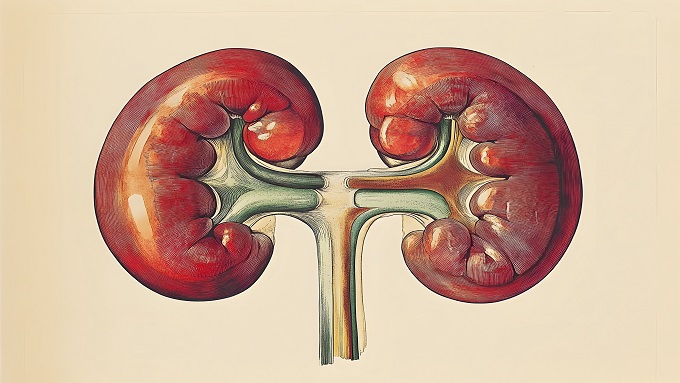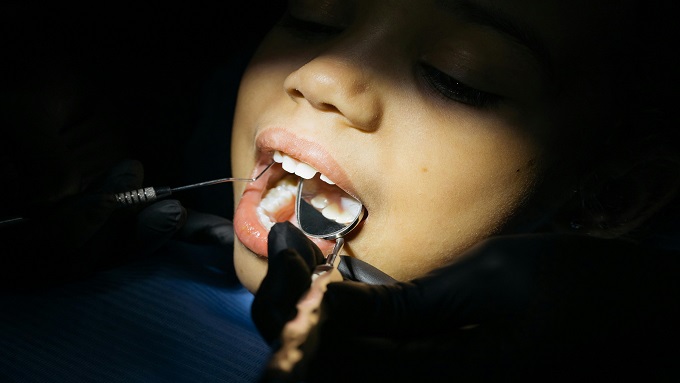GANGGUAN GINJAL AKUT AKIBAT RHABDOMIOLISIS
Downloads
Acute kidney injury (AKI) is the most serious complication of rhabdomyolysis, a syndrome characterized by skeletal muscle destruction causing leakage of myoglobin and other intracellular protein as well as electrolytes into circulation. Due to its light molecular weight, myoglobin is readily filtered by the glomerus, and enters renal tubules, which may cause acute kidney injury with myoglobinuria. It is also characterized by significant increase of serum creatine kinase (CK) as well as electrolyte abnormalities. This review is intended to elucidate the mechanisms involved in pathogenesis of rhabdomyolysis induced AKI, which is related with its clinical as well as laboratory manifestations. This is used as a basis to determine correct diagnosis and management.The basic mechanisms in the pathogenesis of rhabdomyolysis induced AKI include: 1) renal vasoconstriction and ischemia induced by the release of several mediators which promote vasoconstriction including endothelin-1 and vasopressin which is triggered by activation of sympathetic system and rennin angiotensin aldosteron (RAA) system to compensate hypovolemia. Additionally TNF-α, thromboxane A2, and F2 Isoprostane are also generated in inflammatory response to muscle injury, endothelial dysfunction as well as oxidative injury, 2) formation of myoglobin cast, which is precipitation of myoglobin-Tamm Horsfal protein complex producing obstruction of distal tubules, 3) direct cytotoxic effect of myoglobin on proximal tubules through oxidative injury generated by Fenton Reaction and myoglobin redox cycling. It is concluded that rhabdomyolysis induced AKI is produced by renal ischemia, tubular obstruction and oxidative injury on tubular cells.
Akimau P. et al., 2005. New experimental model of crush injury of the hindlimbs in rats. J Trauma, 1, hal. 51-8.
Bagley, W.H. Yang, H. Shah, K.H., 2007. Rhabdomyolysis. Intern Emerg Med., 2, hal.210–218.
Beetham, R., 2000. Biochemical investigation of suspected rhabdomyolysis. Ann Clin Biochem., 37, hal. 581-7.
Bellomo, R. et al., 2004. Acute Dialysis Quality Initiative. Acute renal failure- definition, outcome measures, animal models, fluid therapy and information technologyneeds: the Second International Consensus Conference of the Acute Dialysis Quality Initiative (ADQI) Group. Crit Care, 8, hal.204–12.
Bosch, X. Poch, E. Grau, J.M., 2009. Rhabdomyolysis and Acute Kidney Injury. N Engl J Med., 361, hal. 62-72.
Boutaud, O. & Roberts, L.J., 2011. Mechanism-based therapeutic aproaches to rhabdomylolysis-induced renal failure. Free Rad Biol Med., 51, hal.1062-7.
Brown, T. 2015. 100-best selling most prescribed branded drugs through march. Diunduh: 10 November 2015 dari www.medscape.com.
Cervellin, G. Comelli, I. Lippi, G., 2010. Rhabdomyolysis: historical background, clinical, diagnostic and therapeutic features. Clin Chem Lab Med., 48(6), hal.749–56.
Chatzizisis, Y.S. Misirli, G. Hatzitolios, A.I. Giannoglou GD., 2008. The syndrome of rhabdomyolysis: complications and treatment. Eur J Int Med., 19, hal.568-74.
Corwin, H.L. Schreiber, M.J. Fang, L.S., 1984. Low fractional excretion of sodium: occurrence with hemoglobinuric- and myoglobinuric induced acute renal failure. Arch Intern Med., 144, hal. 981-2.
De Meijer, A.R. et al., 2003. Serum creatine kinase as predictor of clinical course in rhabdomyolysis: a 5-year intensive care survey. Intensive Care Med., 29, hal.1121-5.
Devarajan, P., 2005. Cellular and molecular derangements in acute tubular necrosis. Curr Opin Pediatr., 17(2), hal.193–9.
Gonzalez, D., 2005. Crush syndrome. Crit Care Med. , 33(Suppl.), S34 –S41.
Halliwell, B. & Gutteridge, J.M., 1990. Role of free radicals and catalytic metal ions in human disease: an overview. Meth Enzymol., 186, hal.1–85.
Holt, S.G. & Moore, K.P., 2001. Pathogenesis and treatment of renal dysfunction in rhabdomyolysis. Intensive Care Med., 27, hal.803-11.
Holt, S. Reeder, B. Wilson, M., 1999. Increased lipid peroxidation in patients with rhabdomyolysis. Lancet, 353, hal.1241.
Huerta-Alardín, A.L. Varon, J. Marik, P.E., 2005. Bench-to-bedside review: Rhabdomyolysis – an overview for Clinicians. Crit Care, 9, hal.158-169.
Katzung, B.G., 2012. Basic and Clinical Pharmacology. 12th Ed. USA: McGraw-Hill.
Khan, F.Y. & Ibrahim, W. 2009. Rosuvastatin induced rhabdomyolysis in a low risk patient: a case report and review of the literature. Curr Clin Pharmacol., 4, hal.1-3.
Lima, R.S.A. da Silva, G.B.Jr, Liborio, A.B. Daher, E.D.F., 2008. Acute kidney injury due to rhabdomyolysis. Saudi J Kidney Dis Transplant., 19(5), hal.721-9.
Melli, G. Chaudhry, V. Cornblath, D.R., 2005. Rhabdomyolysis: an evaluation of 475 hospitalized patients. Medicine (Baltimore),84, hal.377-85.
Mohaupt, M.G., 2003. Rhabdomyolysis. Ther Umsch, 60(7). hal.391-7.
Moore, K.P. et al., 1998. A causative role for redox cycling and its inhibition by alkalinisation in the pathogenesis and treatment of rhabdomyolysis induced renal failure J Biol Chem., 273(31), hal. 731–7.
Nath, K.A. et al., 1992. Induction of heme oxygenase is a rapid, protective response in rhabdomyolysis in the rat. J. Clin. Invest, 90, pp. 267–70.
Nath, K.A. et al., 2000. The indispensability of heme oxygenase-1 in protecting against acute heme protein induced toxicity in vivo. Am. J. Pathol, 156, hal.1527–35.
Neto, L.M. Nascimento, O.R. Tabak, M. Caracelli, I., 1988. The mechanism of reaction of nitrosyl with met and oxymyoglobin: an ESR study. Biochem Biophys Acta, 956, hal.189–96.
Sandhu, J.S. et al., 2000. Non-traumatic rhabdomyolysis with acute renal failure. Ren Fail., 22(1), hal.81–6.
Sever, M.S. Vanholder, R. Lameire, N., 2006. Management of crush related injuries after disasters. N Engl J Med., 354, hal.1052–63.
Copyright (c) 2019 Majalah Biomorfologi

This work is licensed under a Creative Commons Attribution 4.0 International License.
1. The journal allows the author(s) to hold the copyright of the article without restrictions.
2. The journal allows the author(s) to retain publishing rights without restrictions.
3. The legal formal aspect of journal publication accessibility refers to Creative Commons Attribution 4.0 International License (CC-BY).






























